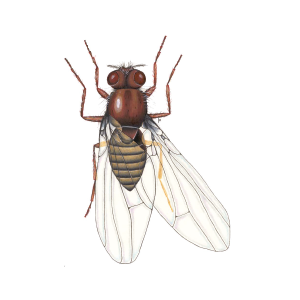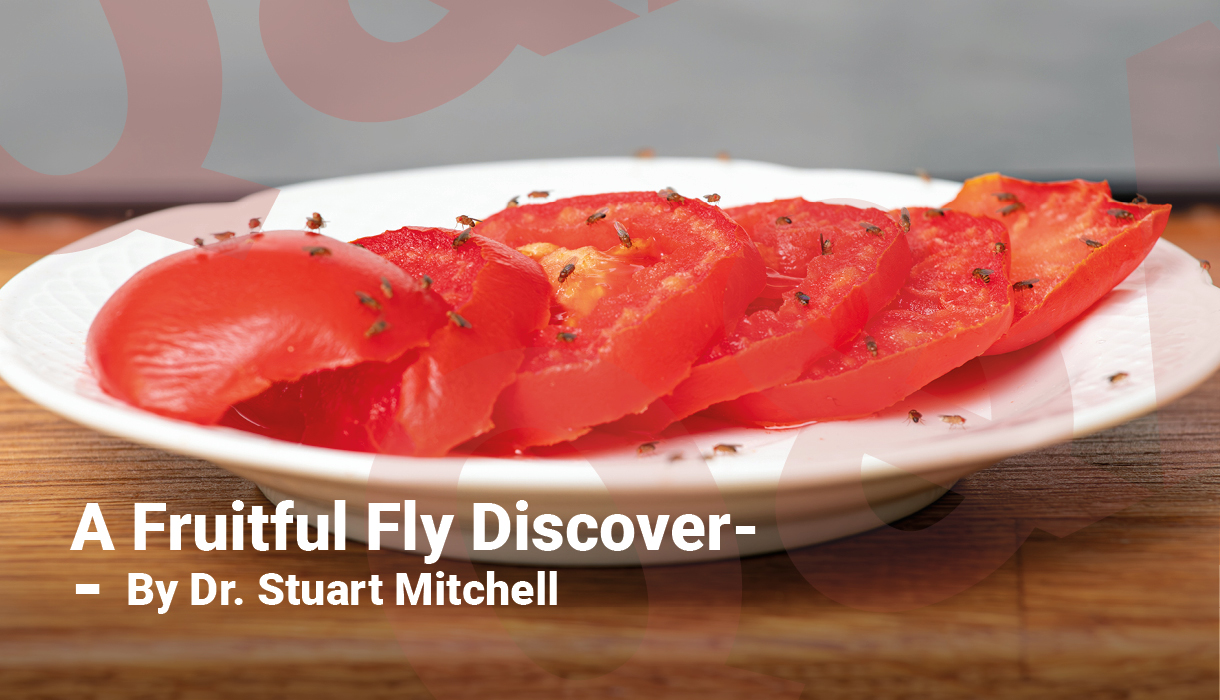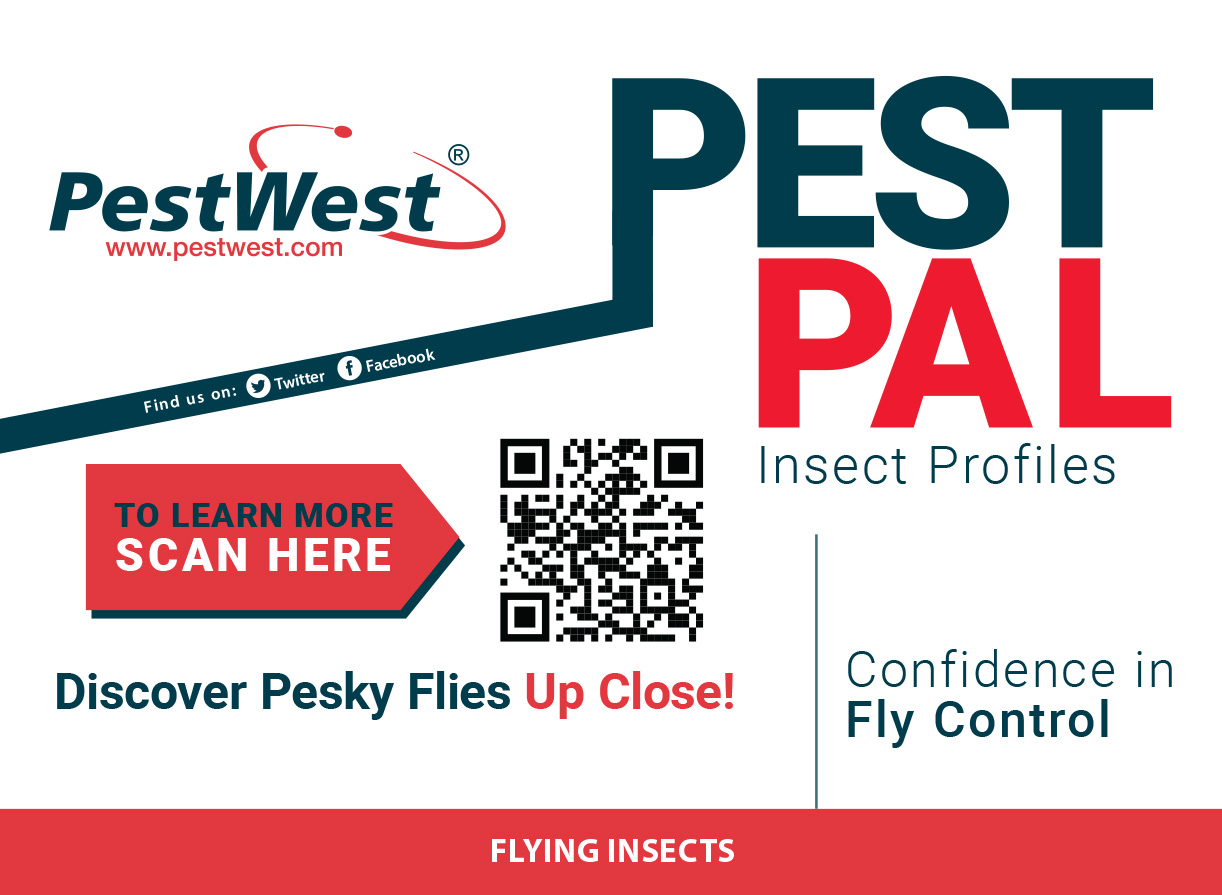Even the smallest of players have tales worth telling within the intricate dances of nature. Enter the Fruit fly, Drosophila spp. (roughly meaning “love moisture”), a miniature entomological marvel with a penchant for fermentation and a story woven deep into the fabric of daily living.
What is a Fruit fly?
Background:
- The Fruit fly has been a part of human history for centuries
- Associated with fermentation sources
- Although a pesky fly species, the study of Fruit flies has brought numerous beneficial research discoveries in genetics and biology
- In nature, saprophage Fruit flies play a crucial role in decomposing organic matter
- Fruit flies become pests when they damage crops and invade human environments
- Adult length about 1/8 inch
- Distinctive reddish-brown eyes
- Bristles or hairs on the tan thorax
- Narrow blackish bands on the abdomen
- Adult Fruit flies are attracted to fermenting organic matter
- Yeast cells express acetate compounds to attract Fruit flies for cell translocation and colonizations
- Adult female Fruit flies can lay up to 500 eggs/lifetime in and on fermenting materials as well as fermenting points in and on containers
- Fruit flies free range flight near abundant food and reproductive resources
- Erratic flight patterns help to evade predators
- Fruit flies effectively transfer pathogens from unsanitary areas to food
- Contamination can result in food borne illness
- From a fermenting bolus to your beer!
How long do Fruit flies live?
- Under favorable conditions, the developmental time of egg to adult is 8 to 10 days
- Adult Fruit flies can live 1 to 2 weeks
- Significant reproductive capacity
Do Fruit flies bite?
- Fruit flies lack mouthparts capable of inflicting bites
- Mouthparts are structured for sponging up nutrients from fermenting food
- Persistent adult fly presence is highly annoying
Where do Fruit flies come from?
- Fermenting food (resource sites) include fermenting rotting produce, liquids, sugary syrups, and even effluence
- Adult fly-spotting on surfaces results in light-colored spots (saliva) and dark-colored spots (feces)
How to catch Fruit flies?
- Install walk-by-monitoring devices
- Demi-Diamond traps include a 30 ml reservoir to lure adult flies (red wine for Fruit fly and moist cat food for Dark-eyed Fruit fly)
How to kill Fruit flies?
- Fruit flies demonstrate attraction to UVA light
- Utilize numerous fluorescent UVA light traps or new LED technology UVA light traps
How to get rid of Fruit flies?
To control Fruit flies, fermenting foods (reproductive sources) must be eliminated. More obvious sources include garbage and residues inside containers, fermenting produce, food spills containing dairy products and bread, and fermenting liquids (wine, sake, beer, mead, cider, vinegar, etc.). Additional sources include floor mop heads and buckets, soiled linen and uniform storage, floor mats, floor drains, cracks in floors, failing baseboards; behind which, floor cleaning has translocated fermenting wastes.
- Store produce in coolers to reduce perishability
- Properly rotate food and beverages–first-in, first-out (FIFO), last-in, first-out (LIFO) and first-to-expire-first-out (FEFO)
- Ensure that trash containers are sealed and kept clean
- Dispose of heavy-wet garbage within puncture and tear resistant 6 mil trash bags
- Conduct routine camera inspections of floor drains
- Routinely clean floors, floor mats, mop buckets, and mop heads
- Routinely clean floor drains
- Repair plumbing leaks, cracks in flooring, and separations in baseboards and wallcoverings
- Routinely launder table linens and uniforms or use a linen service
- Install walk-by-monitoring devices to detect low-level Fruit fly activity
- Install numerous light traps for both monitoring and reducing populations
- While eliminating fermenting resources, overwhelming Fruit fly populations can be drastically reduced by installing numerous Electronic Fly Killers (EFKs), which can capture large numbers of flies
Understanding the ferment-loving Fruit fly provides a fruitful fly discovery. Targeted action to control their pesky populations. For more fruitful fly facts, connect with PestWest at 941.358.1983 or drop a line at customerservice@pestwest.com.

Fruit fly
Drosophila spp.
Features
Small yellowish brown with darkly striped abdomen. Prominent red eyes.
Control
Chameleon® sticky traps are extremely effective at controlling these smaller insects.
Tap the button below to dive into ‘A Fruitful Fly Discovery,’ an insightful article on Fruit Flies by our expert, Doc.






